Immune modulation of some autoimmune diseases: the critical role of macrophages and neutrophils in the innate and adaptive immunity
- PMID: 28202039
- PMCID: PMC5312441
- DOI: 10.1186/s12967-017-1141-8
Immune modulation of some autoimmune diseases: the critical role of macrophages and neutrophils in the innate and adaptive immunity
Abstract
Macrophages and neutrophils are key components involved in the regulation of numerous chronic inflammatory diseases, infectious disorders, and especially certain autoimmune disease. However, little is known regarding the contribution of these cells to the pathogenesis of autoimmune disorders. Recent studies have aimed to clarify certain important factors affecting the immunogenicity of these cells, including the type and dose of antigen, the microenvironment of the cell-antigen encounter, and the number, subset, and phenotype of these cells, which can prevent or induce autoimmune responses. This review highlights the role of macrophage subsets and neutrophils in injured tissues, supporting their cooperation during the pathogenesis of certain autoimmune diseases.
Keywords: Autoimmune disease; Autoimmunity; Inflammation; Macrophages; Neutrophils.
Figures
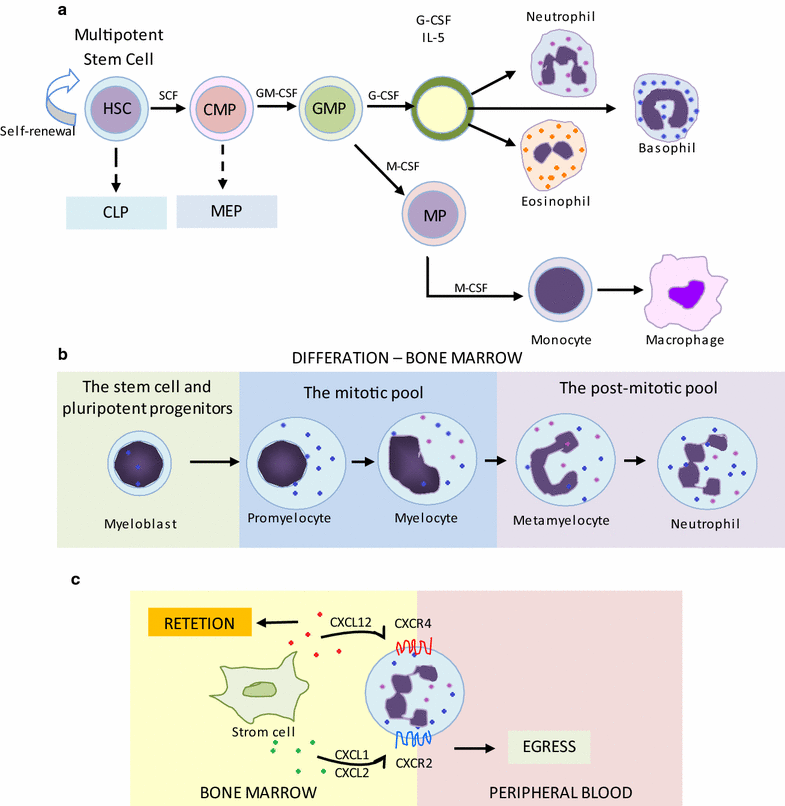
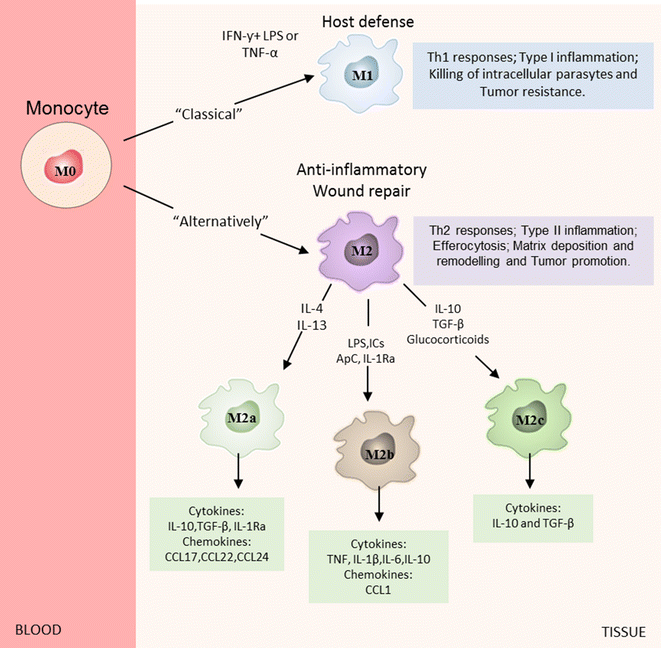
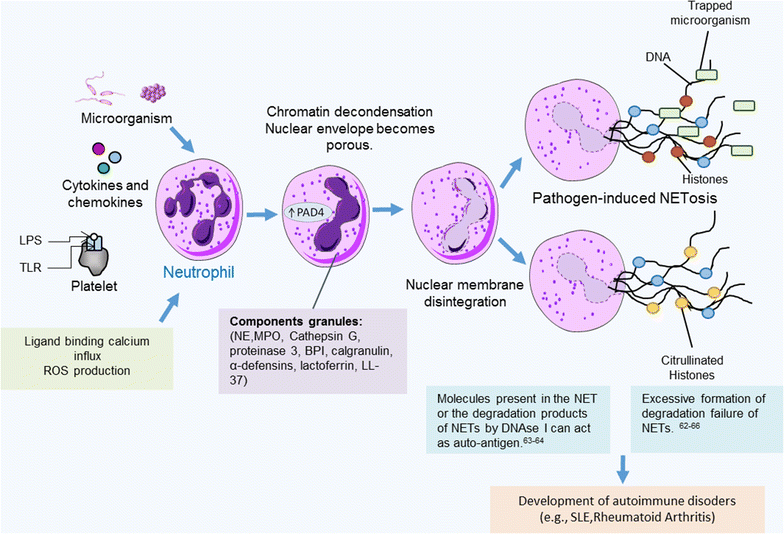
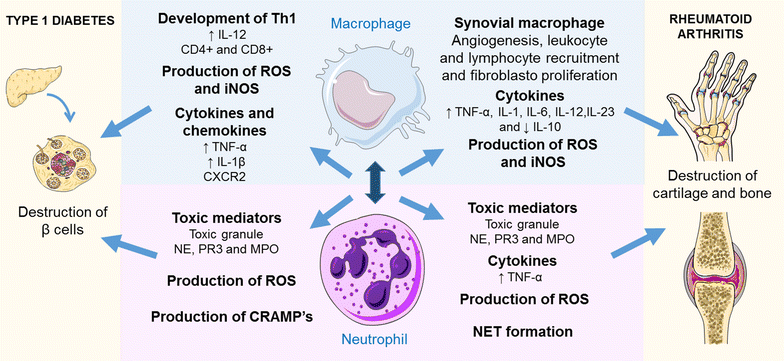
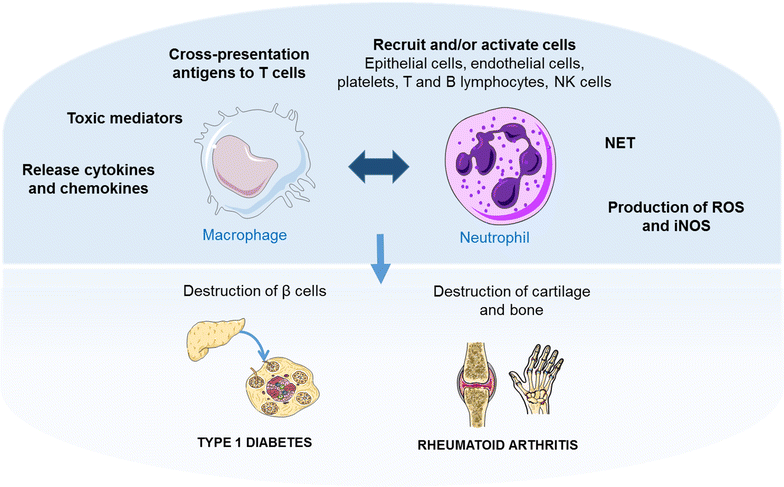
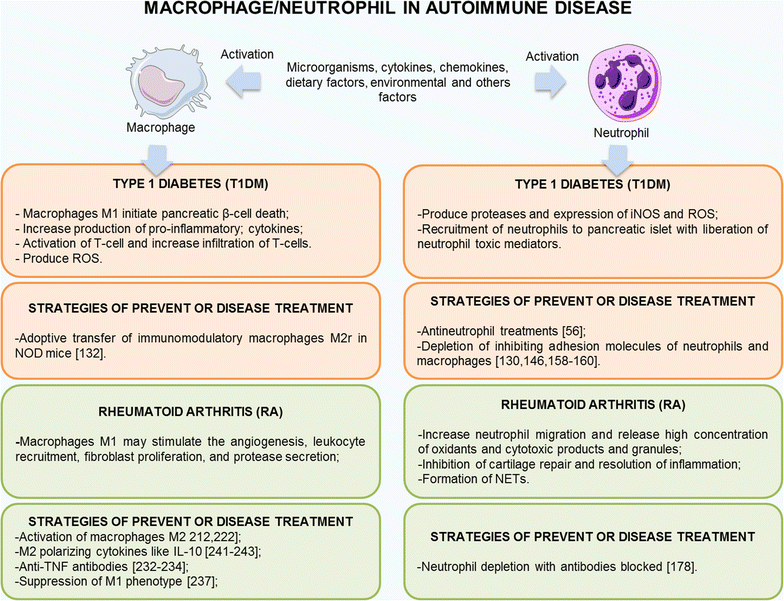
Similar articles
-
Anti-inflammatory Trained Immunity Mediated by Helminth Products Attenuates the Induction of T Cell-Mediated Autoimmune Disease.Front Immunol. 2019 May 21;10:1109. doi: 10.3389/fimmu.2019.01109. eCollection 2019. Front Immunol. 2019. PMID: 31178861 Free PMC article.
-
Neutrophil-Mediated Regulation of Innate and Adaptive Immunity: The Role of Myeloperoxidase.J Immunol Res. 2016;2016:2349817. doi: 10.1155/2016/2349817. Epub 2016 Jan 20. J Immunol Res. 2016. PMID: 26904693 Free PMC article. Review.
-
Social networking of human neutrophils within the immune system.Blood. 2014 Jul 31;124(5):710-9. doi: 10.1182/blood-2014-03-453217. Epub 2014 Jun 12. Blood. 2014. PMID: 24923297 Review.
-
NK cells in autoimmune diseases: Linking innate and adaptive immune responses.Autoimmun Rev. 2018 Feb;17(2):142-154. doi: 10.1016/j.autrev.2017.11.018. Epub 2017 Nov 26. Autoimmun Rev. 2018. PMID: 29180124 Review.
-
Immune cells involved in the pathogenesis of ankylosing spondylitis.Biomed Pharmacother. 2018 Apr;100:198-204. doi: 10.1016/j.biopha.2018.01.108. Epub 2018 Feb 16. Biomed Pharmacother. 2018. PMID: 29428668 Review.
Cited by
-
Tumour dormancy in inflammatory microenvironment: A promising therapeutic strategy for cancer-related bone metastasis.Cell Mol Life Sci. 2020 Dec;77(24):5149-5169. doi: 10.1007/s00018-020-03572-1. Epub 2020 Jun 16. Cell Mol Life Sci. 2020. PMID: 32556373 Free PMC article. Review.
-
An innovative cell model revealed the inhibitory effect of flavanone structure on peroxynitrite production through interaction with the IKKβ kinase domain at ATP binding site.Food Sci Nutr. 2020 Apr 27;8(6):2904-2912. doi: 10.1002/fsn3.1591. eCollection 2020 Jun. Food Sci Nutr. 2020. PMID: 32566208 Free PMC article.
-
Targeting Macrophage Polarization for Reinstating Homeostasis following Tissue Damage.Int J Mol Sci. 2024 Jul 2;25(13):7278. doi: 10.3390/ijms25137278. Int J Mol Sci. 2024. PMID: 39000385 Free PMC article. Review.
-
Large Extracellular Vesicles Derived from Natural Killer Cells Affect the Functions of Monocytes.Int J Mol Sci. 2024 Aug 31;25(17):9478. doi: 10.3390/ijms25179478. Int J Mol Sci. 2024. PMID: 39273424 Free PMC article.
-
Macrophages and Fibroblasts, Key Players in Cancer Chemoresistance.Front Cell Dev Biol. 2018 Oct 9;6:131. doi: 10.3389/fcell.2018.00131. eCollection 2018. Front Cell Dev Biol. 2018. PMID: 30356656 Free PMC article. Review.
References
-
- Weiss G, Schaible UE. Macrophage defense mechanisms against intracellular bacteria. Immunol Rev. 2015;264:182–203. http://www.pubmedcentral.nih.gov/articlerender.fcgi?artid=4368383&tool=p.... - PMC - PubMed
Publication types
MeSH terms
LinkOut - more resources
Full Text Sources
Other Literature Sources
Medical

